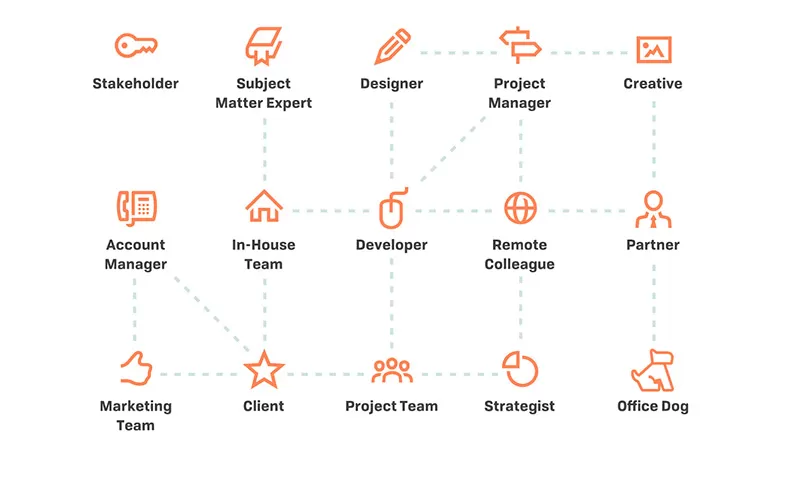Various methods of content creation
There are several methods you can use for content creation on your website. Here are a few popular ones:
Blogging:
Creating a blog on your website is an effective way to regularly publish new content. You can write articles, how-to guides, opinion pieces, and other informative or entertaining content that is relevant to your audience. Blogs are great for building your brand, improving SEO, and engaging with your readers.
Video Content:
Video content has become increasingly popular. You can create videos that showcase your products or services, provide tutorials, share industry insights, or even vlogs. Platforms like YouTube and Vimeo can host your videos, and you can embed them on your website.
Infographics:
Infographics are visually appealing and informative. They present data, statistics, or complex ideas in a visually engaging format. Infographics can be easily shared on social media platforms, and they can help drive traffic to your website.
Podcasting:
Podcasts have gained a lot of popularity in recent years. You can create audio content where you discuss topics related to your industry, interview experts, answer questions, or share stories. Podcasts can be hosted on platforms like Apple Podcasts, Spotify, or your own website.
Case Studies:
Case studies are in-depth analyses of a particular project, product, or service that you have worked on. They provide detailed information, including challenges, solutions, and results. Case studies can help establish your credibility and showcase your expertise to potential customers.
Guest Blogging:
Inviting guest bloggers to contribute to your website can bring fresh perspectives and new ideas. Guest bloggers can provide valuable content, and their contributions can help expand your reach and attract new audiences.
User-Generated Content:
Encouraging your audience to create and share content related to your brand can be an effective way to engage with your community. User-generated content can include testimonials, reviews, social media posts, or even contests and giveaways.
Remember, it’s essential to create high-quality, original, and valuable content that is relevant to your target audience. Consistency and relevance are key to building a strong online presence and attracting and retaining visitors to your website.

Can you provide some tips for creating engaging blog content?
Certainly! Here are some tips for creating engaging blog content:
Know Your Audience:
Understand who your target audience is and what topics, interests, and pain points are relevant to them. Tailor your content to address their needs and provide them with valuable information.
Catchy Headlines:
Create attention-grabbing headlines that pique the curiosity of readers. A compelling headline increases the chances of your blog post being clicked and read.
Provide Value:
Offer practical and actionable information in your blog posts. Provide solutions to problems, answer common questions, or share insights and expertise that your audience will find useful.
Use Visuals: Include relevant images, infographics, or videos in your blog posts to make them visually appealing and to aid in conveying your message effectively. Visual content helps break up text and keeps readers engaged.
Write Engaging Introductions:
Hook your readers from the start with an engaging introduction. Pose a question, share a surprising fact, or tell a story that draws them in and makes them want to continue reading.
Use Subheadings and Formatting:
Break your content into sections using subheadings. This helps readers scan the content easily and find the information they’re interested in. Use bullet points, numbered lists, and bold or italicized text to highlight key points.
Incorporate Multimedia:
Embed relevant videos, audio clips, or SlideShare presentations within your blog posts to provide a multi-dimensional experience for your readers.
Incorporate Personal Stories:
Share personal anecdotes or stories to make your content relatable and connect with your audience on a more emotional level. Personal stories can help illustrate points, provide examples, or entertain readers.
Encourage Interaction:
End your blog posts with a call-to-action that encourages readers to leave comments, ask questions, or share their own experiences related to the topic. Engage with your audience by responding to comments and fostering discussions.
Write Well and Edit Thoroughly:
Ensure your content is well-written, free of grammatical errors, and easy to read. Proofread and edit your blog posts before publishing to maintain a high level of professionalism and credibility.
Remember, consistency is key when it comes to blogging. Regularly publish new content to keep your audience engaged and coming back for more.
How can I encourage my audience to create user-generated content?
Encouraging your audience to create user-generated content can be a great way to engage with your community and build a sense of belonging. Here are some tips to encourage user-generated content:
Clear Call-to-Action:
Clearly communicate to your audience that you welcome and value their contributions. Include a call-to-action in your content, such as asking for their opinions, feedback, or stories related to your brand or industry.
Contests and Challenges:
Run contests or challenges that require user-generated content as entries. For example, ask your audience to submit photos, videos, or written content related to a specific theme or topic. Offer incentives like prizes, discounts, or recognition for participants to motivate them to contribute.
Hashtags and Campaigns:
Create branded hashtags or social media campaigns that encourage your audience to share their experiences, stories, or creative works related to your brand. This can help generate buzz and increase visibility for both your brand and the user-generated content.
Social Media Engagement:
Actively engage with your audience on social media platforms. Like, comment, and share their posts when they mention or tag your brand. This encourages them to continue creating content and fosters a sense of community.
User Highlight Features:
Showcase user-generated content on your website or social media platforms. This can be in the form of customer testimonials, reviews, or featuring their photos, videos, or stories. Highlighting your audience’s contributions not only gives them recognition but also inspires others to contribute as well.
Collaboration Opportunities:
Provide opportunities for collaboration with your audience. For example, you can invite them to co-create content, participate in interviews or podcasts, or contribute guest blog posts. This not only encourages user-generated content but also strengthens the relationship between your brand and your audience.
Feedback and Rewards:
Provide feedback and recognition for user-generated content. Thank your audience for their contributions and showcase their work. Offer rewards or exclusive perks to those who consistently contribute valuable content, which can further motivate them to engage with your brand.
Create a Community:
Foster a sense of community among your audience by creating forums, groups, or online communities where they can connect with each other and share their experiences. This provides a platform for user-generated content and encourages ongoing engagement.
Remember to always acknowledge and appreciate the efforts of your audience when they contribute user-generated content. Engage with them, respond to their contributions, and show genuine interest in their experiences. Building a positive and supportive relationship with your audience will encourage them to continue creating content and strengthen their loyalty to your brand.

What are some effective ways to promote my podcast and attract listeners?
Promoting your podcast effectively is crucial to attract listeners and build a loyal audience. Here are some effective ways to promote your podcast:
Optimize Your Podcast Metadata:
Pay attention to your podcast title, description, and tags. Use relevant keywords that describe your podcast’s topic to improve its discoverability in podcast directories and search engines.
Create Compelling Podcast Artwork:
Design visually appealing podcast artwork that grabs attention and reflects the theme or tone of your podcast. A well-designed cover image can attract potential listeners browsing through podcast directories.
Leverage Social Media:
Utilize social media platforms to promote your podcast. Create dedicated accounts for your podcast and share engaging content related to your episodes. Engage with your audience, respond to comments, and use relevant hashtags to expand your reach.
Cross-Promote on Other Podcasts:
Collaborate with other podcasters in your niche and explore opportunities for cross-promotion. This can involve guest appearances on other podcasts, shout-outs, or participating in podcasting networks. Cross-promotion exposes your podcast to new audiences who are already interested in similar content.
Utilize Your Existing Network:
Leverage your personal and professional network to spread the word about your podcast. Share it with friends, family, colleagues, and acquaintances who might be interested. Encourage them to listen, provide feedback, and share it with their own networks.
Create Engaging Trailers and Teasers:
Develop short audio trailers or teaser episodes that give a glimpse of what your podcast offers. These can be used as promotional material on social media, your website, or shared with potential listeners to generate excitement and interest.
Guest Appearances on Other Podcasts:
Seek opportunities to be a guest on other podcasts that align with your podcast’s topic. This allows you to reach a new audience who may be interested in your content. Provide valuable insights during the interview and mention your podcast, inviting listeners to check it out.
Utilize Your Website or Blog:
If you have a website or blog, create dedicated pages or blog posts for each episode. Include show notes, key takeaways, and links to listen to the episode. Optimize these pages for search engines to improve discoverability.
Engage with Your Audience:
Encourage your listeners to leave reviews, ratings, and comments on podcast directories. Positive reviews and ratings can attract new listeners and improve your podcast’s visibility in search results.
Collaborate with Influencers:
Identify influencers or industry experts in your niche and explore collaborations. This can involve inviting them as guests on your podcast or having them share your episodes with their followers. Influencer endorsements can significantly expand your podcast’s reach.
Paid Advertising:
Consider investing in paid advertising to promote your podcast. Platforms like social media, podcast directories, or Google Ads offer options to target specific demographics and reach potential listeners.
Remember, consistency in releasing new episodes and providing valuable content is key to retaining listeners and attracting new ones. Engage with your audience, seek feedback, and continuously improve your podcast based on their preferences.
